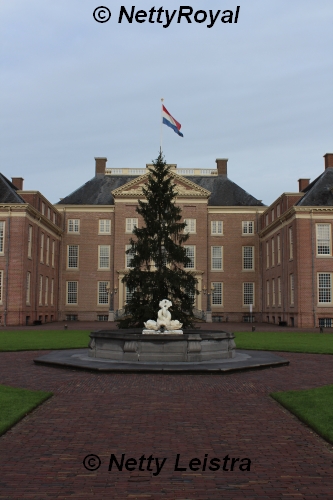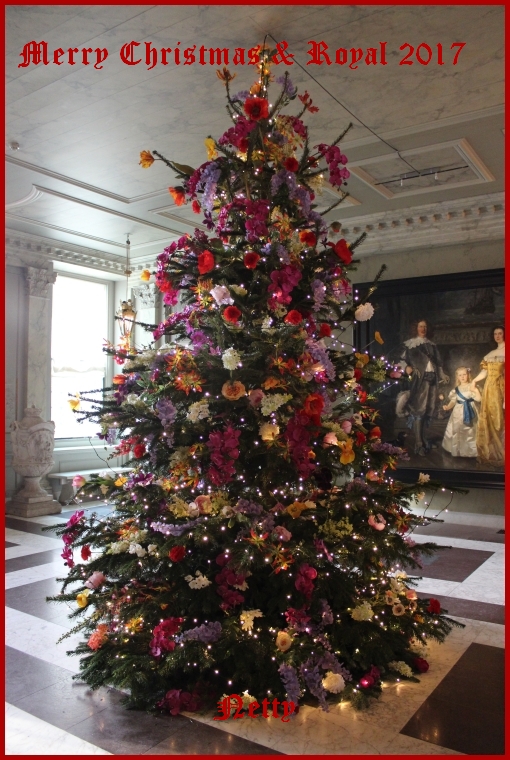During the Christmas time many people enjoy having a Christmas tree (in German: Weihnachtsbaum) – either a real or an artificial one – in the house, me included. It is strange to imagine a house at Christmas time without a tree full of the most beautiful ornaments. But where does this tradition come from and what does it have to do with royals and nobles?
Christmas trees might have existed already before the 16th century. In 1605 a chronicler wrote in Strasbourg, Alsace (then Germany): “At Christmas they set up Christmas trees in Strasbourg in their rooms.” The trees existed all through the 16th and 17th century, but it wasn’t until the early 18th century the custom became somewhat more common. For quite a while the custom was regarded as a Protestant one, so you could mainly find them in the upper Rhineland. Only in the 19th century the trees would become really popular and were regarded as an expression of German culture, especially among emigrants. Also the royals embraced the custom of having a Christmas tree at Christmas in the early 19th century. From there it spread to other royal courts und the upper class, also outside of Germany. But of course it were the emigrants who brought the Christmas tree over the ocean.
Austria
At the court in Vienna the Christmas tree was introduced by the Protestant Princess Henriette von Nassau-Weilburg, who in 1815 had married the Catholic Archduke Karl of Austria. She would remain a Protestand until her death. In 1816 she set up her first Christmas tree, and she would do so until her death. Some of Karls family members loved her trees, others didn’t. In 1824 Emperor Franz I followed his sister-in-law’s example and set a Christmas tree up at the Hofburg. Soon the custom spread all over Austria. Sadly enough Henriette died around Christmas time on 29 December 1829 of scarlet fever, followed by pneumonia. She had caught the illness while nursing her children through the same illness.
Denmark
The tradition of the Christmas tree in Denmark started on Christmas Eve 1808. Count Frederik Adolph Holstein-Holsteinsborg had married earlier that year to Wilhelmine Reventlow. Through relatives in Germany she had become acquainted with Christmas trees. As “Mimi” in 1865 told the famous fairy-tale writer Hans Christian Andersen, who regularly visited Holsteinborg Castle, they choose a beautiful tree in the woods and took it home. It was decorated with red and white lights and coloured paper decoration. In the 1840s the Christmas tree was regarded as something from Copenhagen, and only in the 1870s the Christmas tree became widespread, first in schools, later at home too.
France
Although some sources say that the first Christmas tree came to France during the German-French war of 1870-1871, others cite that already in 1837 or 1840 Duchess Helene von Mecklenburg-Schwerin, who in 1837 had married the Duke of Orléans, introduced the Christmas tree in Paris.
Great Britain
Already in the time of King George III the Christmas tree was known in Great Britain. He married Duchess Charlotte von Mecklenburg-Strelitz who introduced the Christmas tree at a children’s party in 1800. In the years to come there occasionally were Christmas trees in the royal palaces, although Queen Victoria as a child used to have one in her room at Christmas. Only after Victoria’s marriage to Prince Albert von Sachsen-Coburg und Gotha the costum became more popular. Albert, as a German, had grown up with Christmas trees. For many years the tree remained a custom for the wealthier people. Only in the mid 1920s the use of Christmas tree spread to all classes.
Russia
In 1817 Princess Charlotte of Prussia married the later Russian Tsar Nicholas I and dared to bring a tree into her private quarters. In the 1820s the royal and impoverished children received gifts in the palace, originally from St. Nicholas, but since the late 19th century from Father Frost. In the 1840s a Christmas tree became more common in Russia. Charlotte’s Christmas parties were held after the Christmas Service on Christmas Eve on 24 December. Each member of the imperial family had its own decorated Christmas tree and a table covered with gifts.
See for more information:
- Luxarazzi: Princess Henriette of Nassau-Weilburg, Archduchess of Austria
- Kristeligt Dagblad: Danmarks første juletræ blev tændt i 1808
- People: The Surprising Royal History Behind the Christmas Tree
- Insider: How the Soviets came to celebrate New Years’ Eve like Christmas – and why the Russians still do
- Russia Beyond: A time of gifts: How the Russian tsars celebrated Christmas



